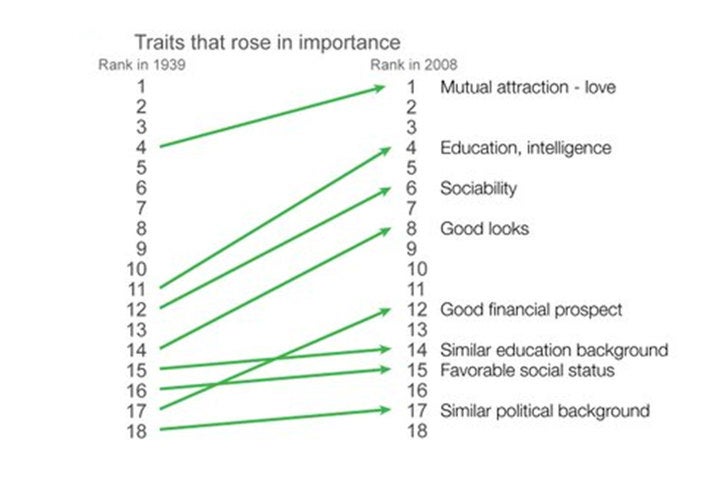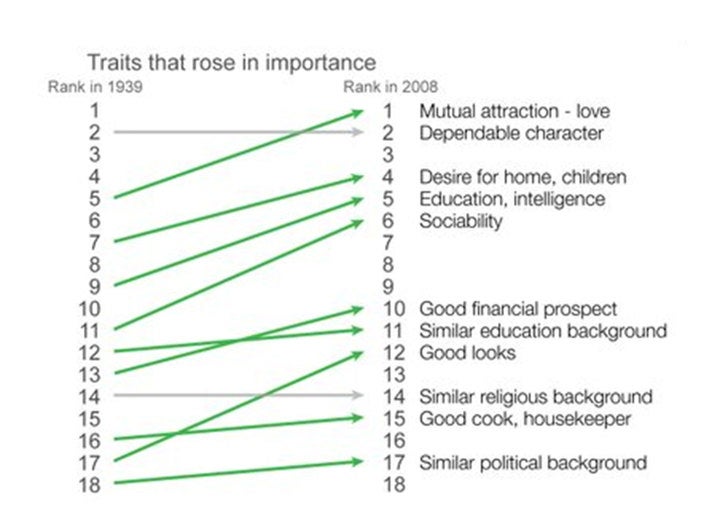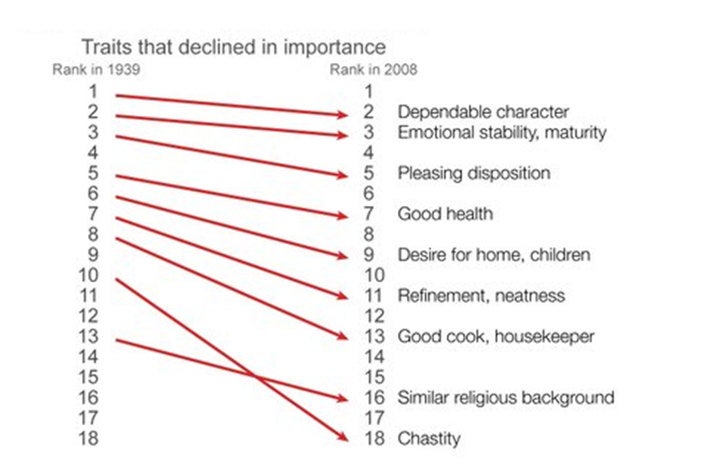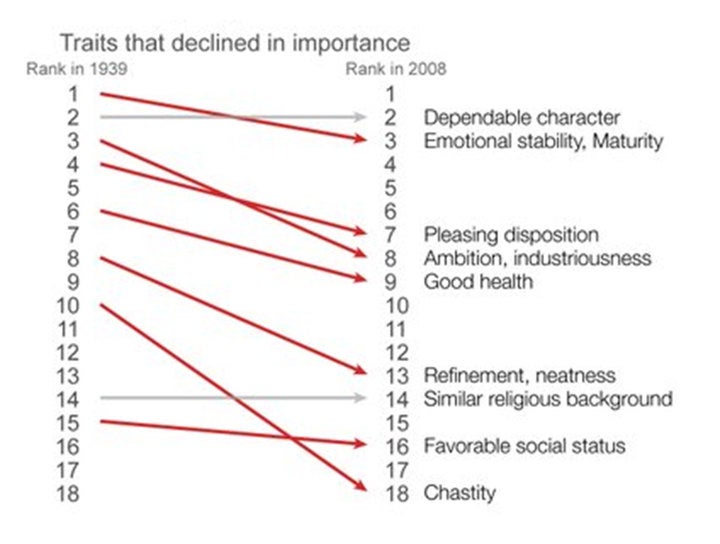What men and women wanted in a spouse in 1939 — and how different it is today

Your support helps us to tell the story
From reproductive rights to climate change to Big Tech, The Independent is on the ground when the story is developing. Whether it's investigating the financials of Elon Musk's pro-Trump PAC or producing our latest documentary, 'The A Word', which shines a light on the American women fighting for reproductive rights, we know how important it is to parse out the facts from the messaging.
At such a critical moment in US history, we need reporters on the ground. Your donation allows us to keep sending journalists to speak to both sides of the story.
The Independent is trusted by Americans across the entire political spectrum. And unlike many other quality news outlets, we choose not to lock Americans out of our reporting and analysis with paywalls. We believe quality journalism should be available to everyone, paid for by those who can afford it.
Your support makes all the difference.Think about how your grandmother met your grandfather.
She probably didn't swipe right because of an amusing description in his Tinder profile. Dating has changed hugely over the past generations, and so have cultural ideas about what men and women value most in a mate.
This idea is perfectly illustrated by a chart that economist Max Roser, who created the blog Our World in Data, recently put out on Twitter.
The chart is made with data from a study published in the Journal of Family Issues in 2013, in which three researchers compared how heterosexual men and women ranked the importance of 18 traits in wives and husbands; first in 1939, and then again in 2008.
So how did views evolve over nearly 70 years?
First, the traits that people value more today. The lines on the left in green indicate the traits that rose in importance over the years. For both men and women, mutual attraction and love rose up the ranks, to become the most highly ranked trait in 2008. (In 1939, women ranked “dependable character” as the most important quality in a prospective husband, while men chose emotional stability and maturity.)
Here's the chart showing what women said they want, in 1939 and 2008:

And what men said they wanted:

For both sexes, education and intelligence, good looks, good financial prospect, sociability, a similar education background and a similar political background all rose in the ranks over the years.
Women ranked a favorable social status for their partner more highly in 2008 than in 1939. Interestingly, men rated a woman’s desire for home and children and good cooking and housekeeping more highly over time — perhaps because these qualities were no longer taken for granted in a wife.
Then there are the traits that declined in importance, shown in red on Roser's chart. For both men and women, the importance of chastity nose-dived, from #10 in 1939 to #18 in 2008.
Here is Roser's chart, showing what women said they wanted in 1939 and 2008:

And here is the same chart for men:

Emotional stability and maturity, a pleasing disposition, good health, and refinement and neatness also declined for both sexes.
For women, a similar religious background and a desire for home and children became less important in their mates, while men placed less value on ambition and industriousness in their wives.
Copyright: Washington Post
Join our commenting forum
Join thought-provoking conversations, follow other Independent readers and see their replies
Comments